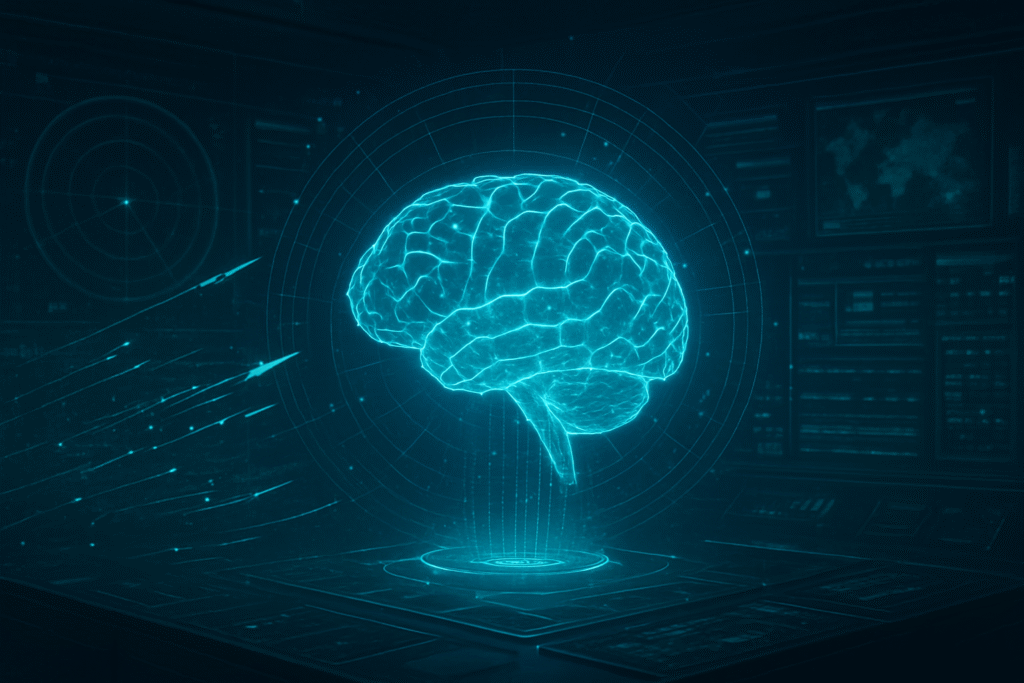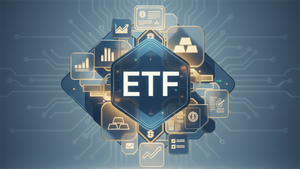Financial News
National Security Under Siege: Prosecution Unveils AI-Enhanced Missile Technology Theft

The shadows of advanced espionage have lengthened over the tech world, as a recent high-profile prosecution sheds stark light on the critical threat posed by the theft of sophisticated missile technology, especially when intertwined with Artificial Intelligence (AI) and Machine Learning (ML) components. This incident, centered around the conviction of Chenguang Gong, a dual U.S.-China citizen, for stealing highly sensitive trade secrets from a Southern California research and development company, has sent ripples through national security circles and the global tech industry. The case underscores a perilous new frontier in state-sponsored economic espionage, where the intellectual property underpinning cutting-edge defense systems becomes a prime target, directly impacting the strategic balance of power and accelerating the already intense global AI arms race.
The immediate significance of Gong's conviction is multifaceted. It highlights the vulnerability of even highly secure defense contractors to insider threats and demonstrates the aggressive tactics employed by foreign adversaries, particularly China, to acquire advanced military technology. The stolen blueprints for next-generation infrared sensors and readout integrated circuits, valued at hundreds of millions of dollars, represent a direct assault on the U.S.'s technological superiority in missile detection and tracking. As the world grapples with the rapid evolution of AI, this case serves as a chilling reminder that the digital blueprints of future warfare are now as valuable, if not more so, than the physical hardware itself, forcing a critical re-evaluation of cybersecurity, intellectual property protection, and national defense strategies in an AI-driven era.
Unpacking the Stolen Edge: AI's Integral Role in Next-Gen Missile Tech
The prosecution of Chenguang Gong, a 59-year-old former engineer, for theft of trade secrets from HRL Laboratories (a joint venture of The Boeing Company (NYSE: BA) and General Motors Company (NYSE: GM)), revealed the alarming nature of the technologies compromised. Gong pleaded guilty to pilfering over 3,600 files, including blueprints for sophisticated infrared sensors designed for space-based systems to detect nuclear missile launches and track ballistic and hypersonic missiles. Crucially, the theft also included designs for sensors enabling U.S. military aircraft to detect and jam incoming heat-seeking missiles, and proprietary information for readout integrated circuits (ROICs) facilitating missile detection and tracking. Of particular concern were blueprints for "next-generation sensors capable of detecting low-observable targets," such as stealth aircraft, drones, and radar-evading cruise missiles.
These stolen technologies represent a significant leap from previous generations. Next Generation Overhead Persistent Infrared (Next Gen OPIR) sensors, for example, are projected to be three times more sensitive and twice as accurate than their predecessors (SBIRS), essential for detecting the weaker infrared signatures of advanced threats like hypersonic weapons. They likely operate across multiple infrared wavelengths (SWIR, MWIR, LWIR) for enhanced target characterization and operate with high-resolution imaging and faster frame rates. The ROICs are not merely signal converters but advanced, often "event-based" and High Dynamic Range (HDR) designs, which only transmit meaningful changes in the infrared scene, drastically reducing latency and data throughput – critical for real-time tracking of agile targets. Furthermore, for space applications, these components are radiation-hardened to ensure survivability in harsh environments, a testament to their cutting-edge design.
While the prosecution did not explicitly detail AI components in the act of theft, the underlying systems and their functionalities are deeply reliant on AI and Machine Learning. AI-powered algorithms are integral for processing the massive datasets generated by these sensors, enabling enhanced detection and tracking by distinguishing real threats from false alarms. Multi-sensor data fusion, a cornerstone of modern defense, is revolutionized by AI, integrating diverse data streams (IR, radar, EO) to create a comprehensive threat picture and improve target discrimination. For real-time threat assessment and decision-making against hypersonic missiles, AI algorithms predict impact points, evaluate countermeasure effectiveness, and suggest optimal interception methods, drastically reducing response times. Experts within the defense community expressed grave concerns, with U.S. District Judge John Walter highlighting the "serious risk to national security" and the potential for adversaries to "detect weaknesses in the country's national defense" if the missing hard drive containing these blueprints falls into the wrong hands. The consensus is clear: this breach directly empowers adversaries in the ongoing technological arms race.
The AI Industry's New Battleground: From Innovation to Infiltration
The theft of advanced missile technology, particularly that interwoven with AI/ML components, reverberates profoundly through the AI industry, impacting tech giants, specialized startups, and the broader competitive landscape. For AI companies, the specter of such intellectual property theft is devastating. Years of costly research and development, especially in specialized domains like edge AI for sensors or autonomous systems, can be wiped out, leading to collapsed sales, loss of competitive advantage, and even company failures. Tech giants, despite their resources, are not immune; Google (NASDAQ: GOOGL) itself has faced charges against former employees for stealing sensitive AI technology related to its supercomputing capabilities. These incidents underscore that the economic model funding AI innovation is fundamentally threatened when proprietary models and algorithms are illicitly acquired and replicated.
Conversely, this escalating threat creates a booming market for companies specializing in AI and cybersecurity solutions. The global AI in cybersecurity market is projected for significant growth, driven by the need for robust defenses against AI-native security risks. Firms offering AI Security Platforms (AISPs) and those focused on secure AI development stand to benefit immensely. Defense contractors and companies like Firefly (a private company), which recently acquired SciTec (a private company specializing in low-latency AI systems for missile warning and tracking), are well-positioned for increased demand for secure, AI-enabled defense technologies. This environment intensifies the "AI arms race" between global powers, making robust cybersecurity a critical national security concern for frontier AI companies and their entire supply chains.
The proliferation of stolen AI-enabled missile technology also threatens to disrupt existing products and services. Traditional, reactive security systems are rapidly becoming obsolete against AI-driven attacks, forcing a rapid pivot towards proactive, AI-aware security frameworks. This means companies must invest heavily in "security by design" for their AI systems, ensuring integrity and confidentiality from the outset. Market positioning will increasingly favor firms that demonstrate leadership in proactive security and "cyber resilience," capable of transitioning from reactive to predictive security using AI. Companies like HiddenLayer (a private company), which focuses on protecting AI models and assets from adversarial manipulation and model theft, exemplify the strategic advantage gained by specializing in counter-intelligence technologies. Furthermore, AI itself plays a dual role: it is a powerful tool for enhancing cybersecurity defenses through real-time threat detection, automated responses, and supply chain monitoring, but it can also be weaponized to facilitate sophisticated thefts via enhanced cyber espionage, automated attacks, and model replication techniques like "model distillation."
A New Era of Strategic Risk: AI, National Security, and the Ethical Imperative
The theft of AI-enabled missile technology marks a significant inflection point in the broader AI landscape, profoundly impacting national security, intellectual property, and international relations. This incident solidifies AI's position not just as an economic driver but as a central component of military power, accelerating a global AI arms race where technological superiority is paramount. The ability of AI to enhance precision, accelerate decision-making, and enable autonomous operations in military systems reshapes traditional warfare, potentially leading to faster, more complex conflicts. The proliferation of such capabilities, especially through illicit means, can erode a nation's strategic advantage and destabilize global security.
In terms of intellectual property, the case highlights the inadequacy of existing legal frameworks to fully protect AI's unique complexities, such as proprietary algorithms, training data, and sophisticated models. State-sponsored economic espionage systematically targets foundational AI technologies, challenging proof of theft and enforcement, particularly with techniques like "model distillation" that blur the lines of infringement. This systematic targeting undermines the economic prosperity of innovating nations and can allow authoritarian regimes to gain a competitive edge in critical technologies. On the international stage, such thefts exacerbate geopolitical tensions and complicate arms control efforts, as the dual-use nature of AI makes regulation challenging. Initiatives like the U.S.-proposed Political Declaration on Responsible Military Use of Artificial Intelligence and Autonomy, endorsed by numerous states, reflect an urgent global effort to establish norms and guide responsible behavior in military AI development.
This event draws comparisons to pivotal moments in AI history that showcased its transformative, and potentially destructive, power. Just as AlphaGo demonstrated AI's ability to surpass human intellect in complex strategy games, and AlphaDogfight proved AI's superiority in simulated aerial combat, this theft underscores AI's direct applicability and strategic importance in military domains. It is increasingly viewed as an "Oppenheimer moment" for AI, signaling a profound shift in military capabilities with potentially existential consequences, akin to the advent of nuclear weapons. This intensified focus on AI's military implications brings with it significant ethical concerns, particularly regarding reduced human control over lethal force, the potential for algorithmic bias in targeting, and the "black box" nature of AI systems that can obscure accountability. The need for responsible AI development, emphasizing human oversight, transparency, and ethical frameworks, becomes not just an academic exercise but a critical national security imperative to prevent unintended harm and ensure that human values remain central in an increasingly AI-driven world.
The Horizon: AI's Dual Path in Defense and Deterrence
Looking ahead, the fallout from missile technology theft involving AI/ML components will shape both near-term and long-term developments in national security and the tech industry. In the near term (0-5 years), adversaries are expected to rapidly integrate stolen AI/ML blueprints to enhance their existing missile capabilities, improving evasion, precision targeting, and resilience against countermeasures. This will shorten development cycles for sophisticated weaponry in rival nations, directly compromising existing defense systems and accelerating the development of next-generation sensors for potentially malicious actors. Techniques like "model distillation" will likely be employed to rapidly replicate advanced AI models at lower costs, impacting military intelligence.
Longer term (5+ years), the trajectory points to a heightened and potentially destabilizing AI arms race. The integration of advanced AI could lead to the development of fully autonomous weapon systems, raising severe concerns about nuclear instability and the survivability of second-strike capabilities. Superintelligent AI is predicted to revolutionize remote sensing, from image recognition to continuous, automated surveillance, fundamentally altering the conduct and strategy of war. For stolen technologies, applications will include enhanced missile performance (precision targeting, real-time adaptability), evasion and counter-countermeasures (adaptive camouflage, stealth), and advanced threat simulation. Conversely, counter-technologies will leverage AI/ML to revolutionize missile defense with faster response times, greater accuracy, and multi-sensor fusion for comprehensive threat awareness. AI will also drive automated and autonomous countermeasures, "counter-AI" capabilities, and agentic AI for strategic decision-making, aiming for near-100% interception rates against complex threats.
Addressing these challenges requires a multi-faceted approach. Enhanced cybersecurity, with "security by design" embedded early in the AI development process, is paramount to protect against AI-powered cyberattacks and safeguard critical IP. International collaboration is essential for establishing global norms and regulations for AI in military applications, though geopolitical competition remains a significant hurdle. Ethical AI governance, focusing on accountability, transparency (explainable AI), bias mitigation, and defining "meaningful human control" over autonomous weapons systems, will be crucial. Experts predict that AI will be foundational to future military and economic power, fundamentally altering warfighting. The intensified AI arms race, the undermining of traditional deterrence, and the rise of a sophisticated threat landscape will necessitate massive investment in "counter-AI." Furthermore, there is an urgent need for AI-informed leadership across government and military sectors to navigate this evolving and complex landscape responsibly.
A Defining Moment: Securing AI's Future in a Precarious World
The prosecution for missile technology theft, particularly with its implicit and explicit ties to AI/ML components, stands as a defining moment in AI history. It unequivocally signals that AI is no longer merely a theoretical component of future warfare but a tangible, high-stakes target in the ongoing struggle for national security and technological dominance. The case of Chenguang Gong serves as a stark, real-world validation of warnings about AI's dual-use nature and its potential for destructive application, pushing the discussion beyond abstract ethical frameworks into the realm of concrete legal and strategic consequences.
The long-term impact on national security will be characterized by an accelerated AI arms race, demanding enhanced cyber defense strategies, new intelligence priorities focused on AI, and a constant struggle against the erosion of trust and stability in international relations. For the tech industry, this means stricter export controls on advanced AI components, immense pressure to prioritize "security by design" in all AI development, a rethinking of intellectual property protection for AI-generated innovations, and an increased imperative for public-private collaboration to share threat intelligence and build collective defenses. This incident underscores that the "black box" nature of many AI systems, where decision-making processes can be opaque, further complicates ethical and legal accountability, especially in military contexts where human lives are at stake.
In the coming weeks and months, the world will watch closely for intensified debates on AI ethics and governance, particularly regarding the urgent need for legally binding agreements on military AI and clearer definitions of "meaningful human control" over lethal autonomous systems. On the cybersecurity front, expect a surge in research and development into AI-powered defensive tools, greater emphasis on securing the entire AI supply chain, and heightened scrutiny on AI system vulnerabilities. In international relations, stricter enforcement of export controls, renewed urgency for multilateral dialogues and treaties on military AI, and exacerbated geopolitical tensions, particularly between major technological powers, are highly probable. This prosecution is not just a legal verdict; it is a powerful and undeniable signal that the era of AI in warfare has arrived, demanding an immediate and coordinated global response to manage its profound and potentially catastrophic implications.
This content is intended for informational purposes only and represents analysis of current AI developments.
TokenRing AI delivers enterprise-grade solutions for multi-agent AI workflow orchestration, AI-powered development tools, and seamless remote collaboration platforms.
For more information, visit https://www.tokenring.ai/.
More News
View More




Recent Quotes
View MoreQuotes delayed at least 20 minutes.
By accessing this page, you agree to the Privacy Policy and Terms Of Service.



